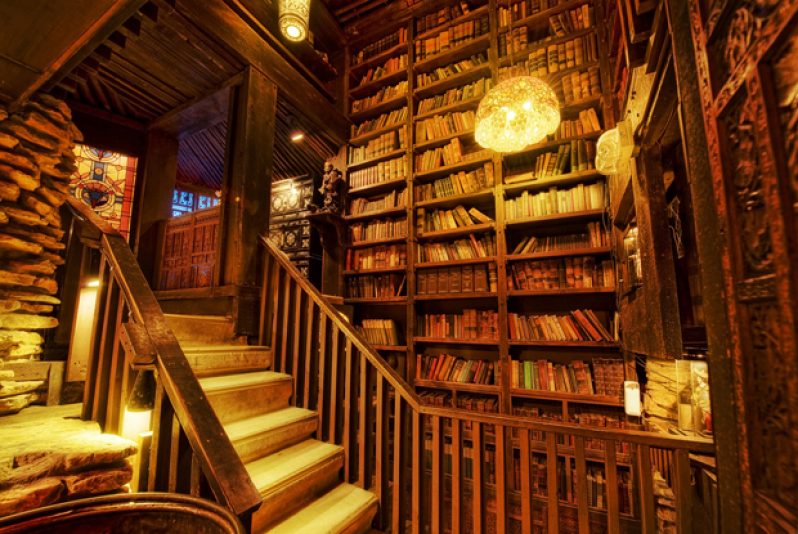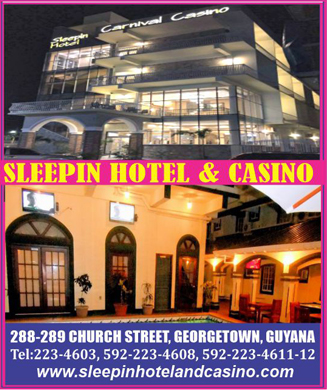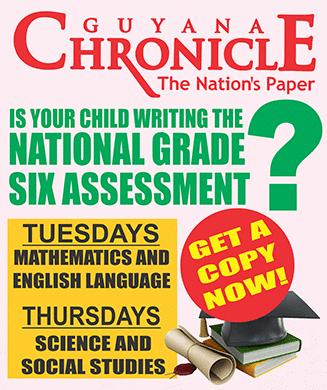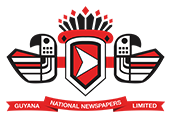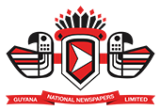ON Friday November 22, 2013, the book, ‘An Introduction to Guyanese Literature’, written by Petamber Persaud, was launched in a special room of the National Library. That room houses the IT Section, and a number of book and artefact collections. That room was named in honour of the first librarian of the National Library, Ms Emily Murray, who served the institution from 1909 to 1940.
It was a fitting place to launch such a book, because the beginnings of the book started with the library, which was opened to the public in 1909. As the author related during his remarks:
“…it all started right here at the National Library. While wading through the books in the Juvenile Section, I was itching to qualify for the Adult Section, and when that time arrived, the first column of shelves that engaged my attention was the one marked ‘Caribbeana’, firstly, because it was right in my face on entering that section, and secondly, this was a different world of books; columns and columns of books, reaching almost to the ceiling. So I was taking tentative steps, and the ‘Caribbeana’ section beckoned me, and I was not disappointed.
“Here, I found books written by our own people, Guyanese and Caribbean people. From Guyana – A. J. Seymour, N. E. Cameron, Sheik Sadeek, Jan Carew, Roy Heath, Edgar Mittelholzer, Denis Williams, O. R. Dathorne, from the Caribbean- V. S. Naipaul, Derek Walcott, Alejo Carpentier, Andrew Salkey, Sam Selvon, Austin Clarke, George Lamming and many others…
“Later I met Caribbean writers like Walcott, Cyntia McLeod, Earl Lovelace, Michael Anthony of ‘Green Days by the River’, Austin Clarke, Nancy Morejon, Lakshmi Persaud, and George Lamming among others.
“What attracted me most in this section were the magazines and journals like Kykoveral, Kaie, Bim and others which later became my primary sources for research.
“Then, in the early 70s, I met two writers who authored some of the books on the shelves – Arthur J. Seymour and Sheik Sadeek, who were the facilitators of the National History and Arts Council’s writing courses. That meeting with living writers in the flesh added a new dimension to literature, and that meeting was a fillip to my interest in Guyanese Literature, which manifested itself when an article I wrote calling for a Caribbean Publishing House was published in the local press. That was in the early 90s then in the new millennium I started to write columns for local newspapers and to produce two television programmes… at this point there was a deeper interaction with emerging local writers, established writers – both local and in the Diaspora and the rest is history now manifested in this book.”
The book is an up-to-date guide, featuring significant literary landmarks from the 16th Century to the new millennium. This 150-page book, including over 100 photographs, is an attempt at bringing to the fore little-known facts about lesser-known aspects of our literature. The big books, the big authors, and the big success stories in Guyanese Literature are also featured.
Another reason for the launch of the publication in the library is the fact that the library played the role of publisher to the book. The National Library is celebrating its 104th year in service to the nation, and throughout that time, this noble institution continues to explore new areas to carry out its mandate, which is “to satisfy, both nationally and internationally, the informational and recreational needs of the library’s users through the collection, organisation, dissemination and preservation of information in printed and other formats.”
Al Creighton, making remarks on the book, said,
“I will not do a close critical review of the book, but I will speak to it; I will speak to it as a very important stimulus to the study of Guyanese Literature and the discourse on Guyanese Literature; I will speak to it as a book that takes us into the world of Guyanese Literature through various windows that Persaud opened through the book; and I would use this as a platform to reflect a little bit on Guyanese Literature – what it is, where it came from, and where it is at the moment, because those are themes at which Persaud’s work aims.
“Now, this ‘Introduction to Guyanese Literature’ is a documentary; it is a description of what has been published in Guyanese Literature, and it tries to list all of those. It is not a critical analysis …but it is certainly an extremely scrupulous account of Guyanese Literature, since its beginnings up to the present time.
“It deals much more with the historical importance of the works than is does with current Guyanese Literature as it is. It covers a wide range of areas as I said before reflecting considerable reading…The record is of course not totally comprehensive but it comes near, it comes quite near to being that. We find that Persaud compartmentalises the whole wide world of Guyanese Literature into several small areas.”
Those areas are, namely: Oral Literature, Travelogues and Histories, First Examples of Writings by Guyanese – The Early Versifiers, Modern Guyanese Poetry, Literary Groups, Magazines, Journals, the Short Fiction, Children’s Literature, The Theatre Movement and Modern Guyanese Drama, The Rise of the Novel, Book Publishing, The Cheddi Jagan Gold Medal for Literature, The Guyana Prize for Literature, The Guyana Annual, Guyanese Short Story, Landmarks of Literature – Guyanese Anthologies of Prose and Poetry…
The Hon. Minister of Education, Priya Manickchand, in her contribution to the book launch, said,
“…I believe this would be a great addition to our literary landscape across the country… I can see young people becoming excited by the snippets provided by this book, and I am glad it was crafted in a way that makes it exciting…”
During the book launch, a significant announcement was made, in keeping with the library’s innovative outreach programme: The National Library is establishing A HALL OF FAME for the literary arts.
The book, ‘An Introduction to Guyanese Literature’, was well received by those in attendance, and is now available at the National Library, and Austin’s Book Services, and can also be sourced through the author.
(To respond to this author, either call him on (592) 226-0065 or send him an email: oraltradition2002@yahoo.com)
WHAT’S HAPPENING:
• ‘An Introduction to Guyanese Literature’ is now available at the National Library, and Austin’s Book Service. This book is an up-to-date guide, featuring significant literary landmarks, from the 16th Century to the new millennium. This 150-page book, including over 100 photographs, is an attempt at bringing to the fore little known facts about lesser known aspects of our literature. The big books, the big authors and the big success stories in Guyanese Literature are also featured.



.jpg)




